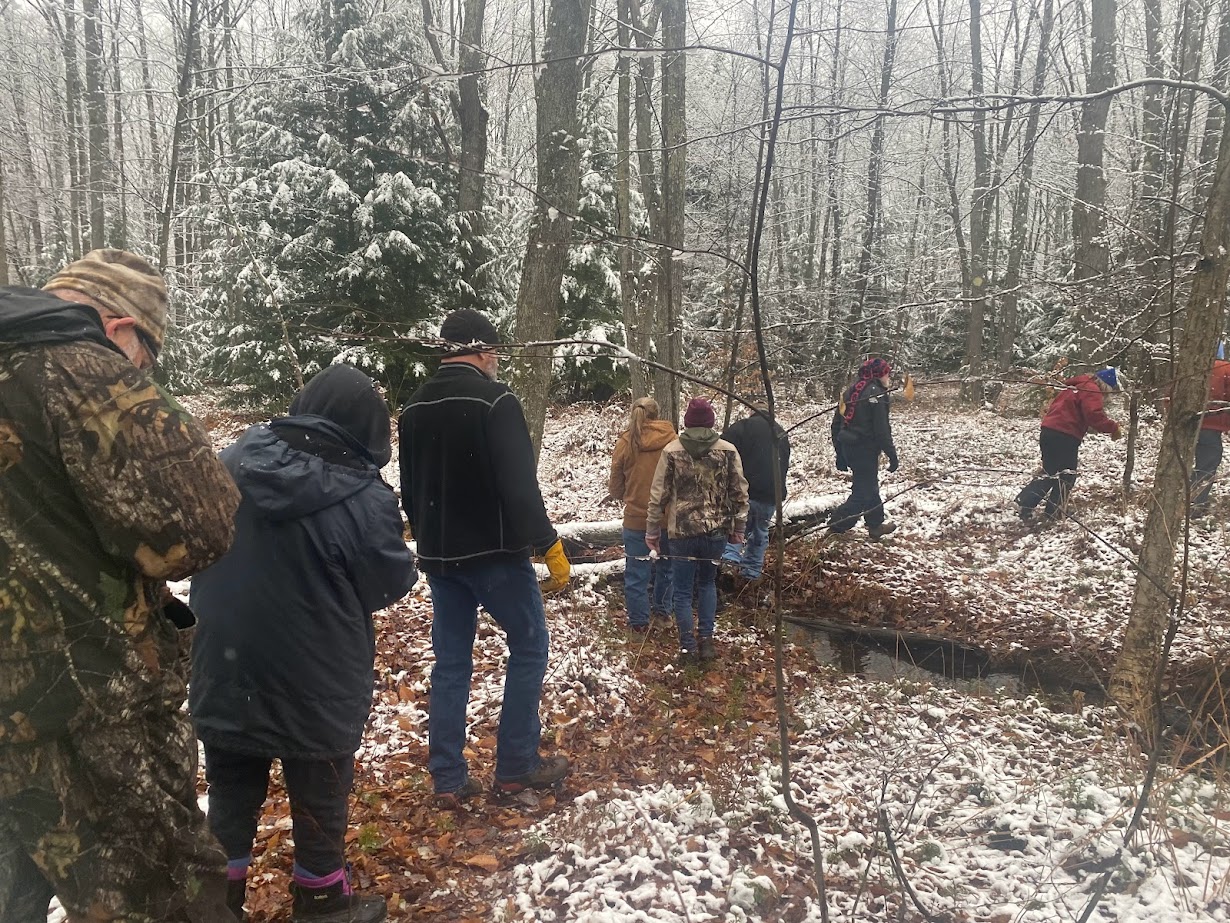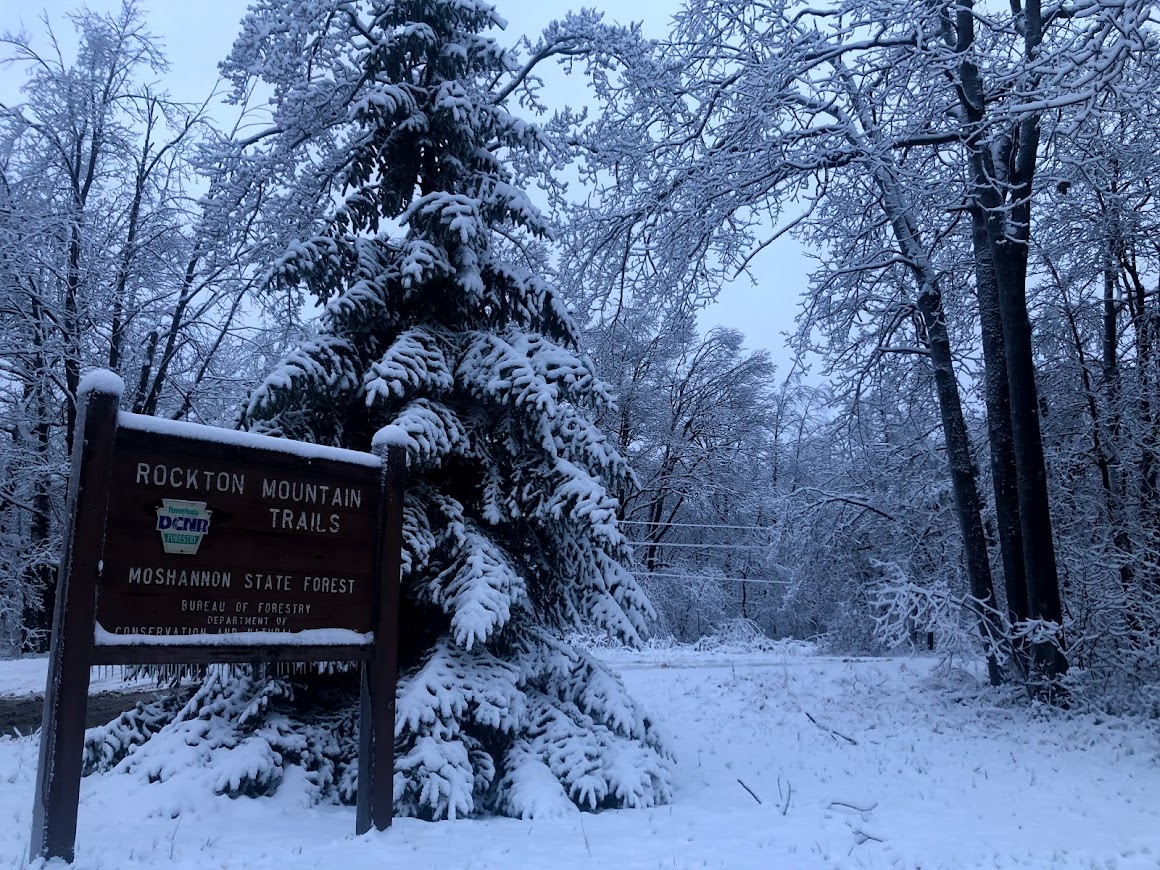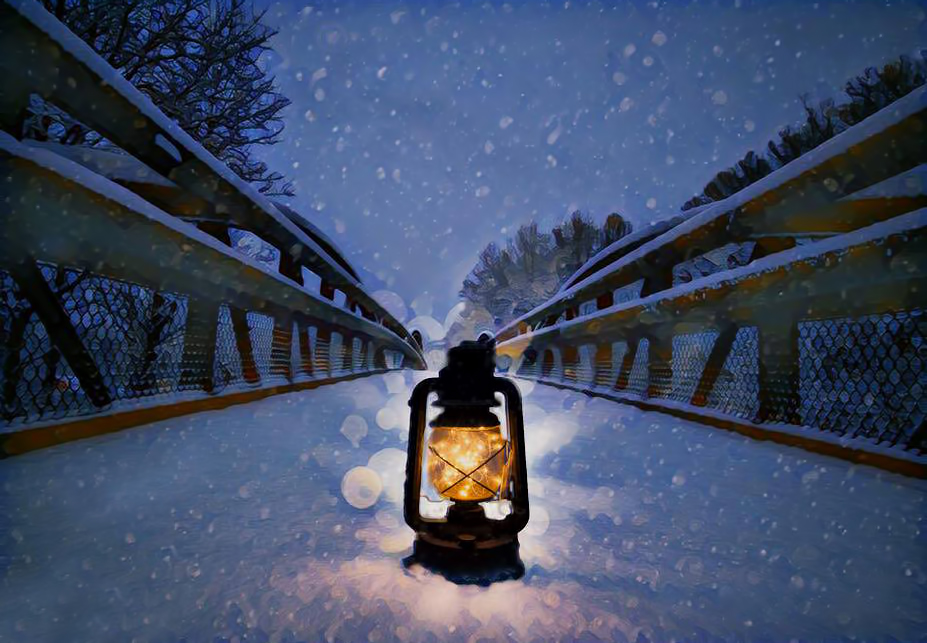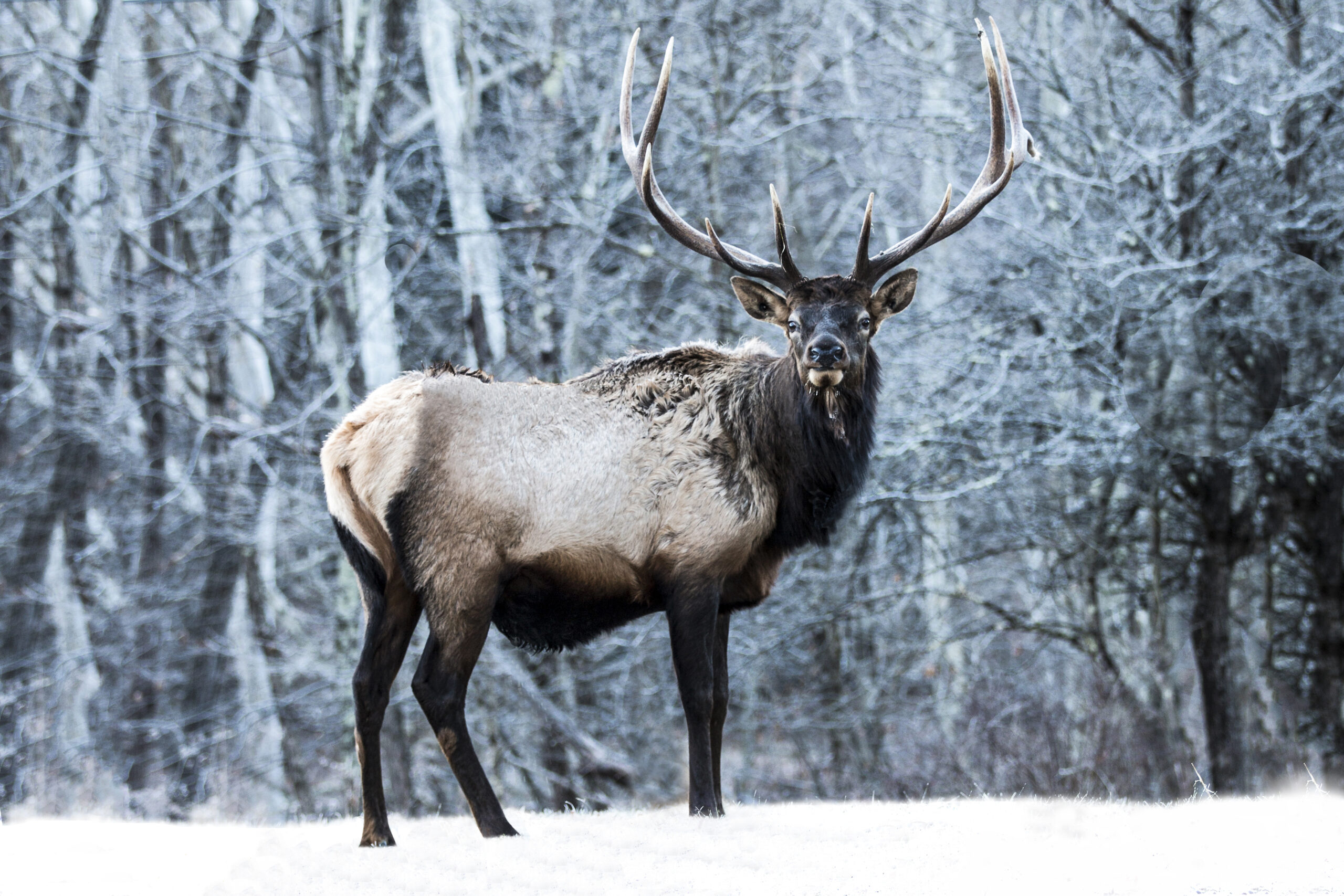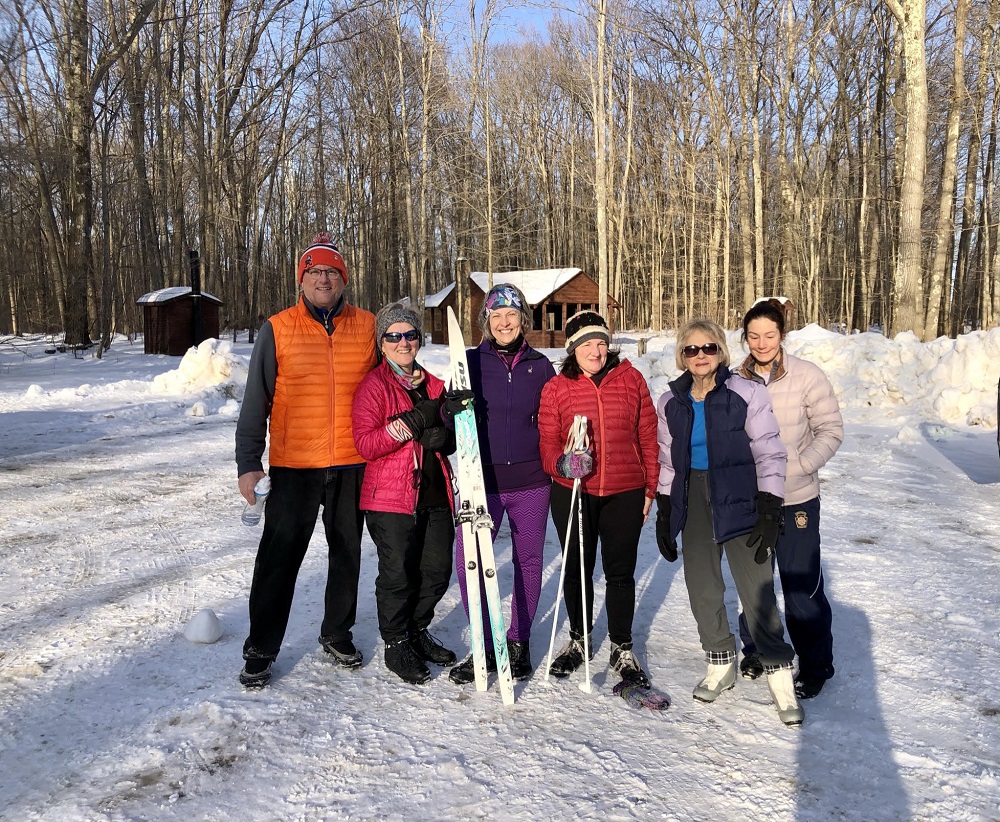Image: Winter scene by Bernadette Chiaramonte, Edge of the Woods Photography
Wintertime is one of the most beautiful times to visit the Pennsylvania Wilds: the landscape sparkles with snowy white dust, the air is crisp and clean, and familiar views suddenly look more magical. New adventures, like skiing or snowshoeing, become possible in the snow.
As you’re enjoying outdoor recreation during winter in the PA Wilds, follow the 7 Principles of Leave No Trace to ensure that you and others have the best experience possible, while also respecting the beautiful natural world and wildlife that we are so fortunate to have.
Preparing for your winter adventure is one of the most important things you can do. The snow makes for fantastic outdoor activities like skiing, snowshoeing, sledding, snowmobiling, winter scene photography and more, but it can also make for tricky travel conditions. Always check roadway conditions and weather advisories before you go out, and check the weather forecast not just for current conditions but also for the hours and days ahead. Know that conditions can also change quickly, so bring along emergency and preparedness equipment. For the winter season, this could include extra clothing and gloves, food, water, blankets, a first aid kit, a fire starter, hand warmers, a flashlight, a small shovel, a portable radio, and grit for traction. Consider bringing a physical map of the area and a compass. If you’re headed to the backcountry, visit in small groups instead of alone. Leave your expected itinerary with family and friends. If the weather or travel conditions worsen, don’t be afraid to change your plans or turn back. Learn more about the Plan Ahead & Prepare principle.
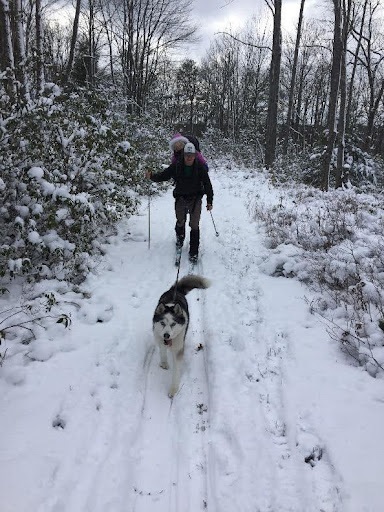
It’s fun to watch your footprints leave a path in the freshly fallen snow in the PA Wilds! However, stay on a trail whenever possible to avoid accidentally damaging plants or wildlife habitat. If a marked trail isn’t available, stay on deep snow cover, at least six inches deep, as much as you can. As the snow melts and the ground becomes muddy, walk in the middle of the path to avoid widening the trail or damaging plants. Avoid traveling and camping on slopes or unstable snow. If camping, stay at least 200 feet away (about 70 big steps) from water. Learn more about the Travel & Camp on Durable Surfaces principle.
Although you may be tempted to simply bury something in the snow, remember that litter will still be there when the snow melts! The simple guidance of “pack it in, pack it out” still applies even in the wintertime. Burying trash or litter in the snow damages our environment. Place all food scraps and other pieces of litter in a bag to take home with you, and be on the lookout for trash that others might have left behind. Take pet waste with you, as it can pollute water sources when the snow melts or carry diseases that may infect local wildlife. For yourself, use toilet paper or wipes sparingly, and be sure to pack them out too. Consider also packing human waste in a Waste Alleviation Gel bag (or WAG bag), or in lieu of packing it out, ensure that it is buried deep in the snow and at least 200 feet away from any water sources. If you create any structures in the snow (such as igloos, sculptures, shelters or windbreaks), be sure to dismantle them before you leave. Learn more about the Trash Your Trash & Pick Up Pet Waste principle.
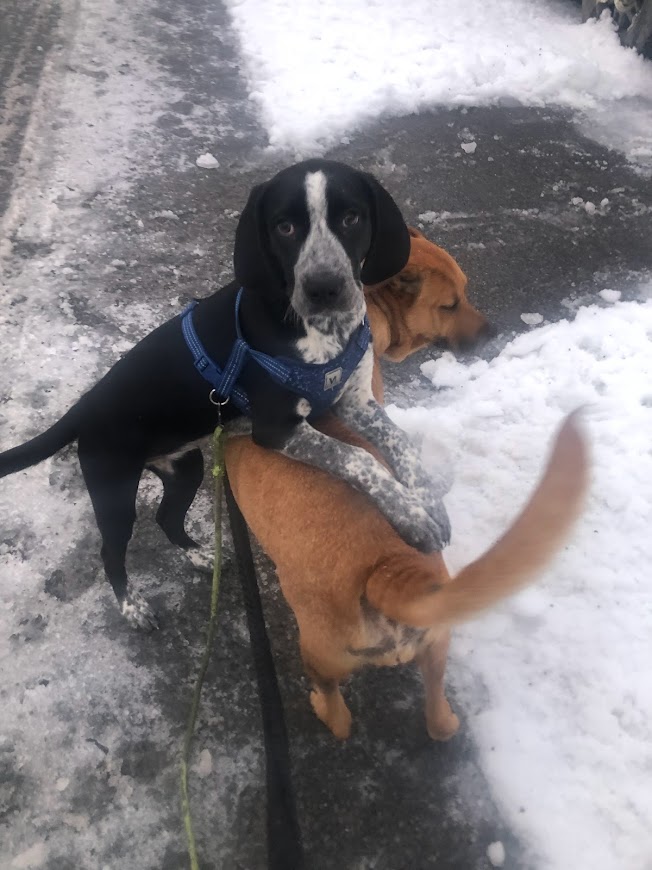
Just like you would in any other season, it’s important to leave all plants, rocks, animals and historical artifacts just as you found them in the wintertime. Taking anything from a natural area alters how its ecosystem usually functions. Still want to have a souvenir from your winter adventure? Pause for a moment to take a photo, paint or draw a picture of the scene, write a poem or story, or sing a song. Consider buying a locally made souvenir after your adventure that symbolizes your trip instead of taking something directly from the outdoors. There are lots of ways to remember and celebrate your winter outdoor recreation adventure! Learn more about the Leave What You Find principle.
Although it might seem like fires are less likely to cause environmental issues in the snow, it’s still important to minimize the impact of any campfires. Carry a lightweight camp stove for cooking instead of building a campfire. In places where campfires are allowed, use only designated fire rings. Keep fires small. Instead of relying on the fire for light, consider using a headlight or lantern instead. Burn only dead downed wood, and use pieces that are smaller than your wrist. Never cut or break limbs off of live, dead, or downed trees. When you’re done with a campfire, make sure it’s completely out. Learn more about the Be Careful With Fire principle.
Many animals are particularly vulnerable in the winter, so ensure that you’re not causing any additional stress for them. Observe wildlife from a distance, and do not follow or approach them. While wildlife might seem hungry, do them a favor by never leaving food for them; it changes their diet and makes them more reliant and unafraid of humans. This could lead to dangerous situations for both people and the wildlife. Do not leave food or other litter behind. Protect wildlife, yourself, and your food by storing any rations and smellable trash securely. Learn more about the Keep Wildlife Wild principle.
There’s nothing quite like the silence of the outdoors in the freshly fallen snow. Be considerate of others and minimize the amount of noise you make, for both other humans and wildlife. When on a trail, be respectful of other users by sharing the space, being courteous and safety-minded, and acting kindly. Especially when on skiing or snowmobiling trails, always yield to downhill or faster traffic. Prepare for blind corners or tricky parts of a trail. If you stop, move to the side of the trail. If possible, do not leave snowshoe or boot tracks on top of ski tracks. Know your local regulations about where you can ski, hike, use motorized equipment, or bring pets, and make sure to follow them. Learn more about the Be Mindful in Shared Spaces principle.
The PA Wilds is an incredible place! People come to this region to have unique experiences, enjoy peace and quiet, catch a glimpse of wildlife, take in cultural history and have fun by partaking in a wide range of outdoor recreation. Protecting our natural assets means protecting the things that sets the PA Wilds apart and makes the region so enjoyable to visit or live in.
Want to learn more about the 7 Principles of Leave No Trace and how you can apply them while exploring the PA Wilds? Learn more about how you can be a good steward in the PA Wilds at our Leave No Trace page.
© Leave No Trace: www.LNT.org




